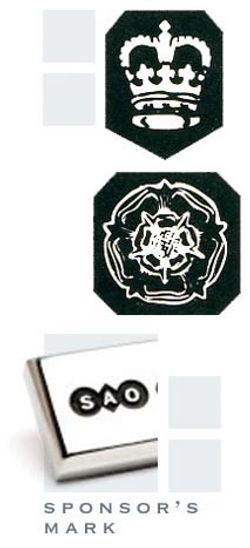Our registers of maker's marks (now called sponsor's marks) go back to 1773. If you have a piece of Sheffield-marked Silver, Gold, Platinum and Palladium, we can identify the sponsor, and usually the maker for you.
It is important to remember, however, that the the sponsor's mark will only tell you who registered the mark and submitted the item to be tested and hallmarked - which is not always the same thing as the manufacturer of the item.
The two marks to look for in the first instance to be certain that item(s) were assayed and marked in Sheffield are the Crown and the Rose. The Crown was used by Sheffield Assay Office to mark silver from 1773 until 1973. In 1903, when Sheffield was also allowed to mark gold as well as silver, the Rose was added as a gold mark. In 1973, after 200 years, Sheffield lost its Crown mark for silver and began to use the Rose for both silver and gold, which it does to the present day.
The sponsor's mark is made up of two major components; the sponsor's initials and the shape which surrounds them. The font or typeface of the initials and the particular shape of the surround are what distinguish a sponsor's mark.
We are also compiling a list of electroplater's marks and trade names, and have comprehensive information on hallmarks from other towns and countries.
If you would like us to identify a Mark for you, please fill out the form for the Enquiry and Research Service, and we will contact you for further information (if required) and a price for the research.
Please note there is a charge of £10.00 plus VAT for the identification of a hallmark.
